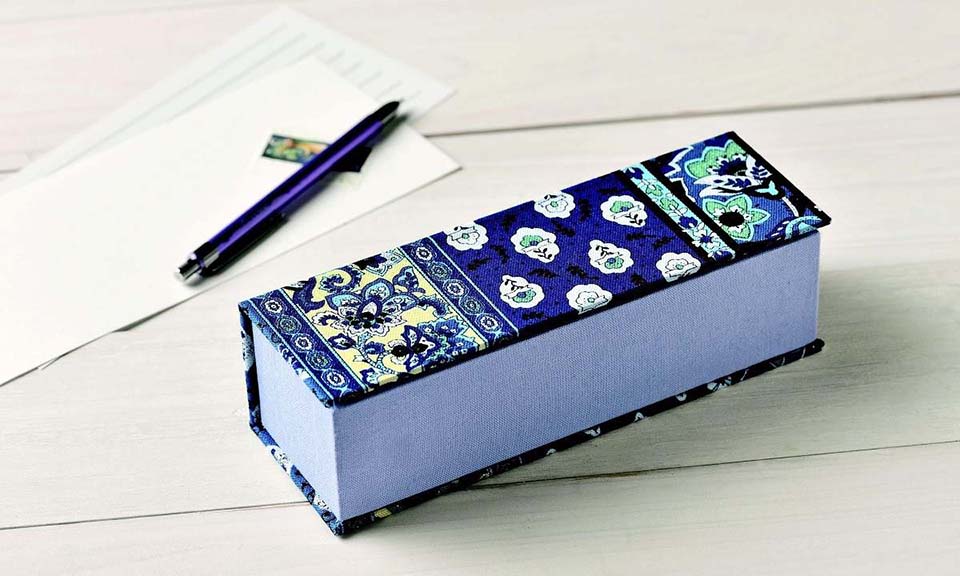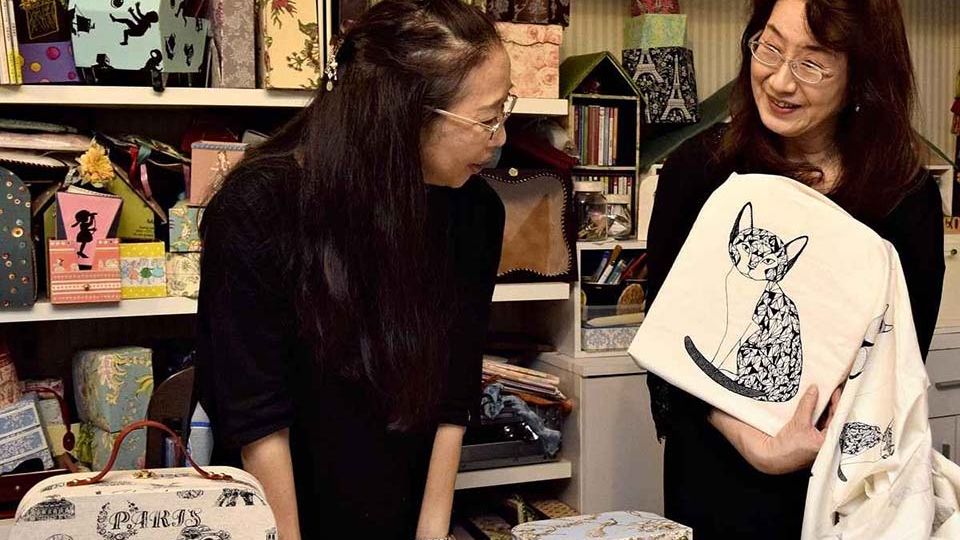August 6, 2024
TOKYO – In a room in Tokyo’s Shibuya Ward on a weekend in early July, pieces of cloth with cats and other patterns were spread out on a desk. Students were attending a lesson on cartonnage, the traditional French art of box making.
In cartonnage, you cut the cardboard into the shapes you need and assemble them into boxes, before then gluing on pieces of fabric. The finished work can be a storage box, a jewelry box or some other kind of container.
Yumiko Sato, who runs the Salon du Cartonnage class, says that cartonnage is believed to have originated from the decoration of boxes used in transporting silkworm cocoons, though there are various theories. The craft became popular among upper-class women at the end of the 19th century. It is then thought to have spread to the general public when paper and glue became more widely available.
A 57-year-old woman of Nerima Ward, Tokyo, has been making cartonnage pieces for 15 years. “Even if you make the same item from the same fabric, it looks different depending on how you apply the fabric. It’s so interesting,” she said smiling.

A piece made by one of Yumiko Sato’s students using fabric with a traditional French pattern. PHOTO: YUMIKO SATO/THE YOMIURI SHIMBUN
Sato learned how to do cartonnage from a French instructor in 1995 while living in Moscow with her husband, who was posted there. She opened her own class in 2002 after returning to Japan.
“You design what you will need in your daily life, build the box, and then glue on the fabric of your choice. The creations are not only beautiful but also very practical,” Sato said.
Around 2010, after her children had grown up, she began traveling to France almost every year to purchase fabrics and other materials for her cartonnage.
“French fabrics are bright and colorful. There are a wide variety of patterns,” she said.
You can also enjoy cartonnage with fabrics you already have on hand. Sato suggests using old ties and clothes that you feel are too good to throw away.
“It’s a French way of enjoying fashion with what you have,” she said. “You can decorate empty sweets boxes you have at home by gluing your favorite fabrics on them. That’s one way to enjoy the craft.”
Kits available

A cartonnage piece made from a kit. PHOTO: TAKAGI SENI/THE YOMIURI SHIMBUN
For those who want to enjoy cartonnage more easily, Takagi Seni, a maker of handicraft materials in Kyoto, sells kits for making items such as eyeglass cases and tissue boxes online and at Yuzawaya and other handicraft stores nationwide.
The kits include pre-cut cardboard pieces and an instruction manual. To complete each piece, you simply find your favorite fabric, cut it into shape with scissors, and glue the fabric to the cardboard box that you have assembled.
“We developed this product in response to consumer demand for a kit that is easy to make. Even for beginners, it’s not difficult to make,” said a staff member at Takagi Seni.
You can also learn the craft online. Atelier Keym in Tokyo, which opened in 2010, provides online instruction to students from Hokkaido to Okinawa. In the beginners class, students receive kits with fabric and cardboard sheets, and they then read the directions on the school’s website as they make their items. They can make smartphone stands, photo frames and other items.
To better enjoy the Paris Olympics season, Maiko Hagiya, head of Atelier Keym, recommends using fabric printed with an Eiffel Tower motif as well as embroidered badges and buttons imported from France to decorate your boxes.
“Just by using something related to France, you can make [the Games] feel closer,” Hagiya said.
There are many ways to experience France from Japan, and this summer is the perfect time to try some out.

